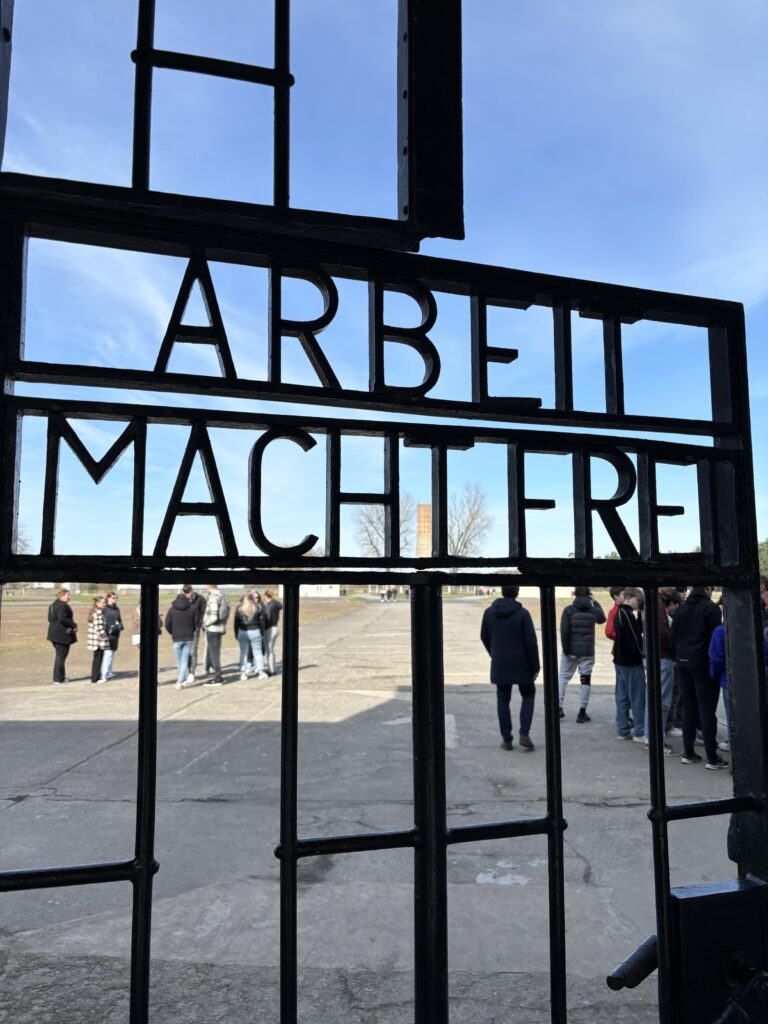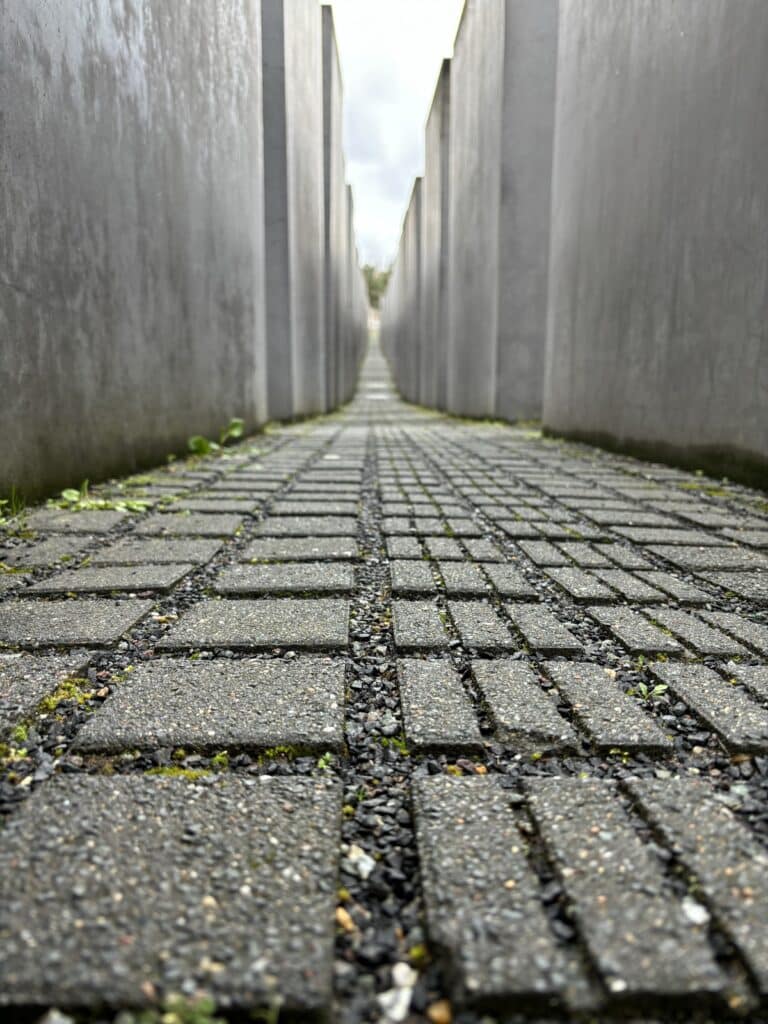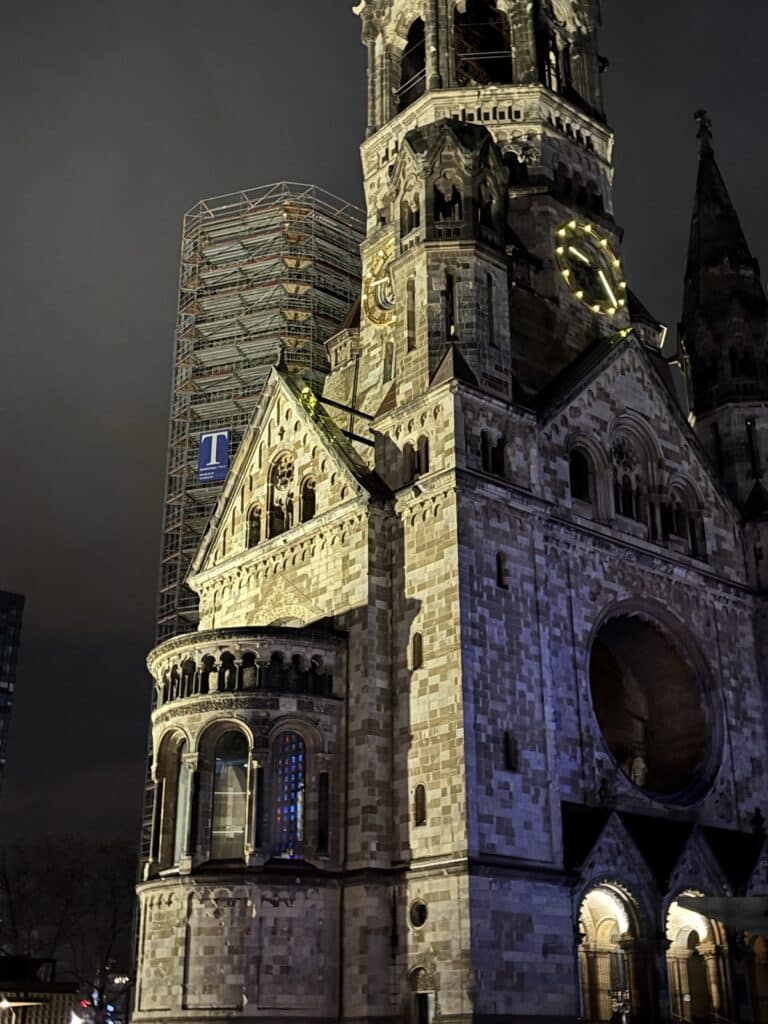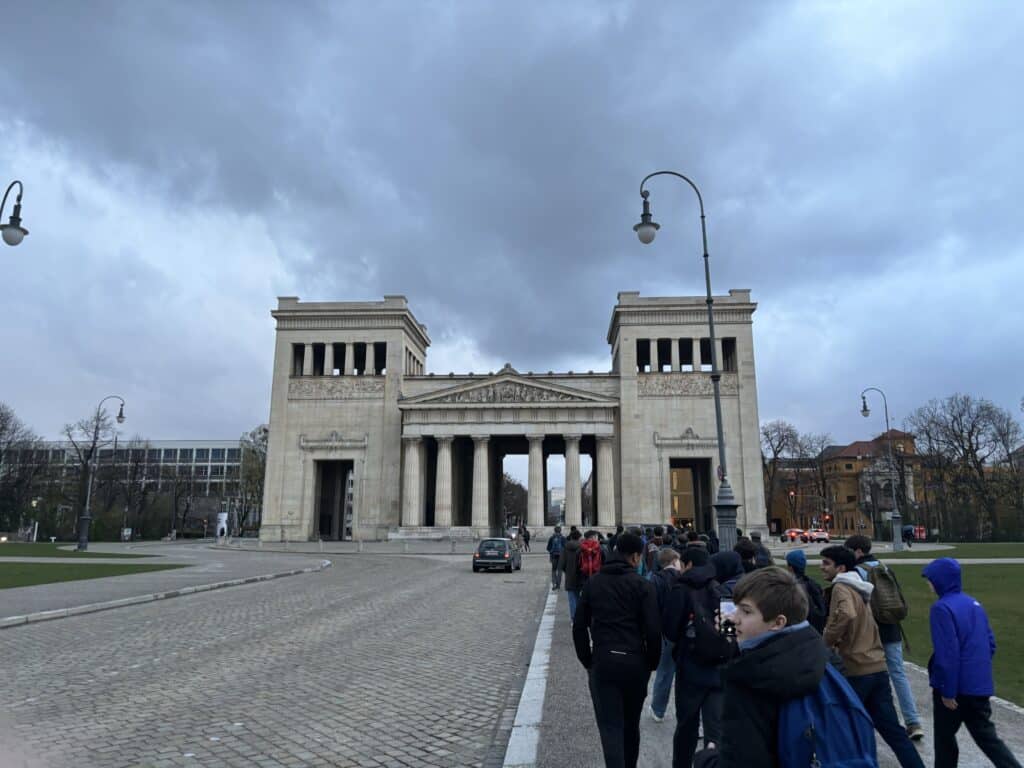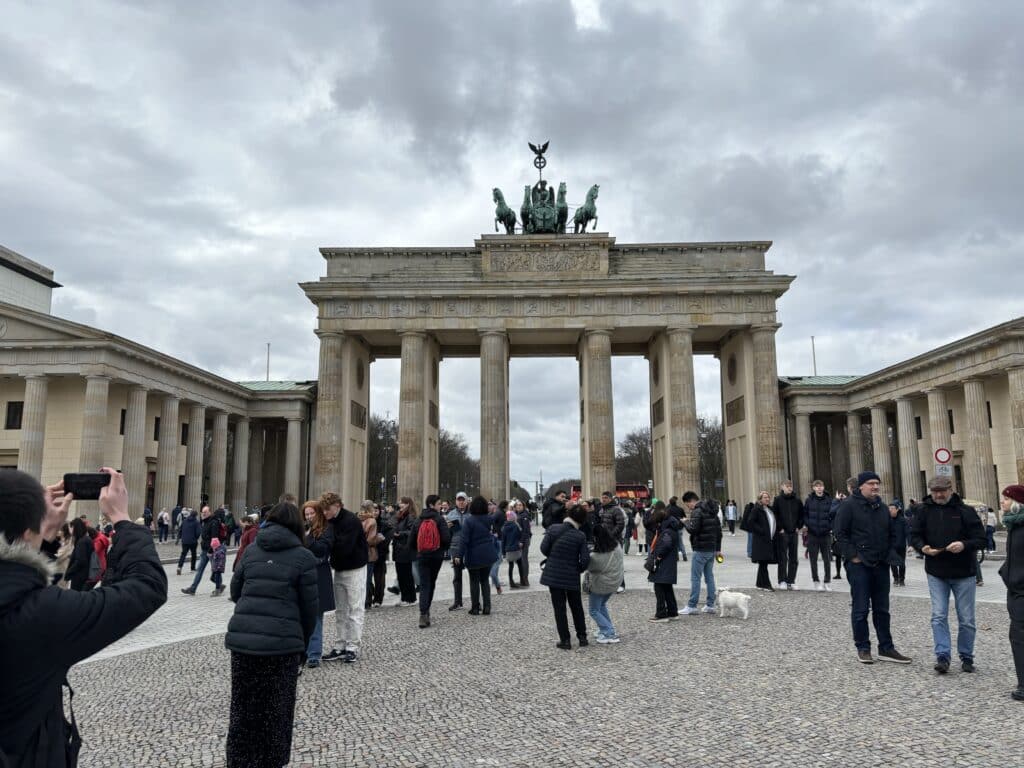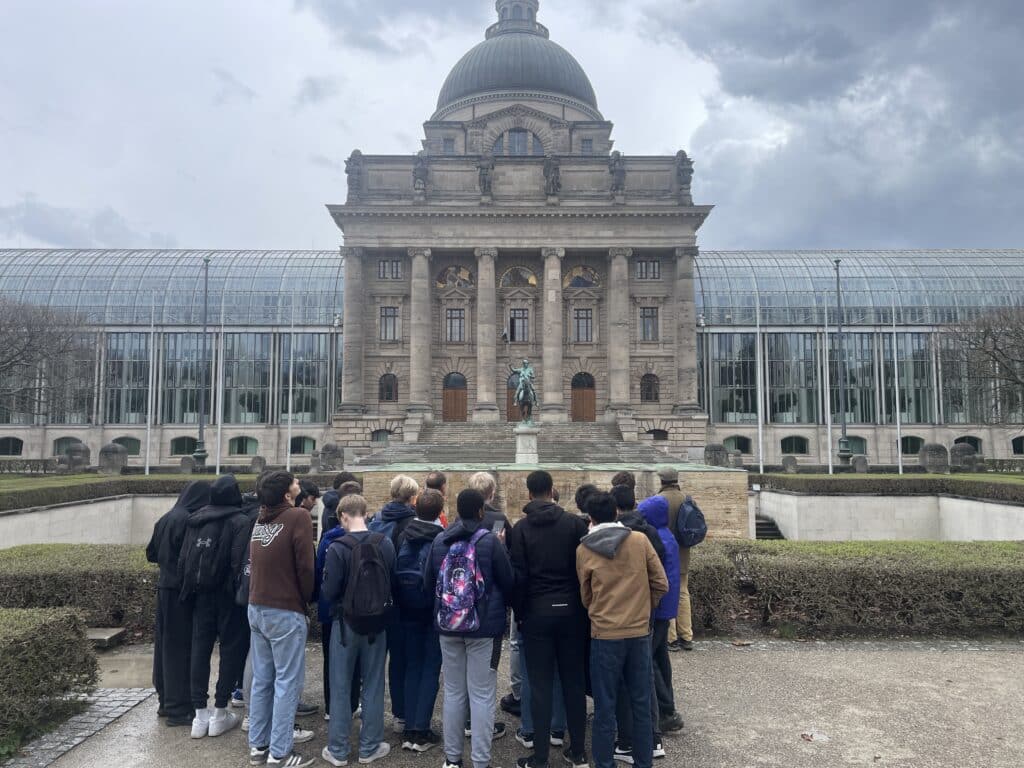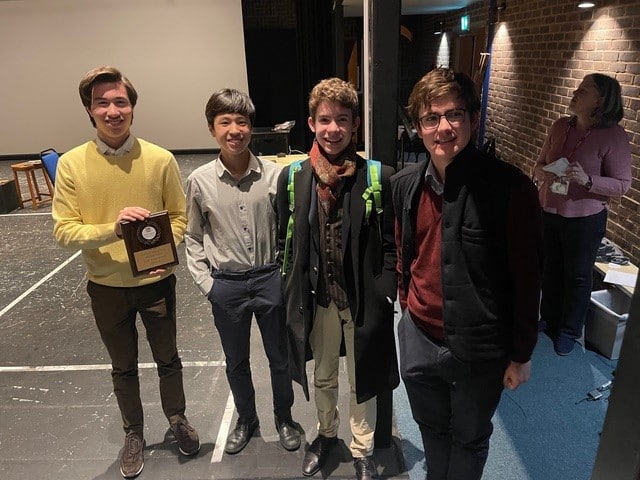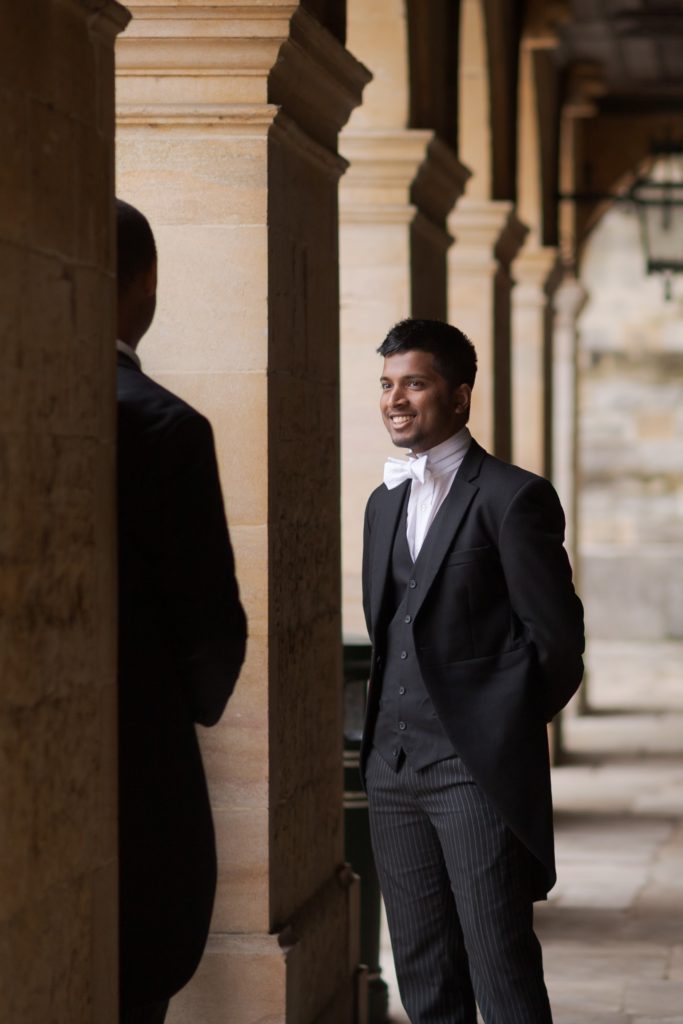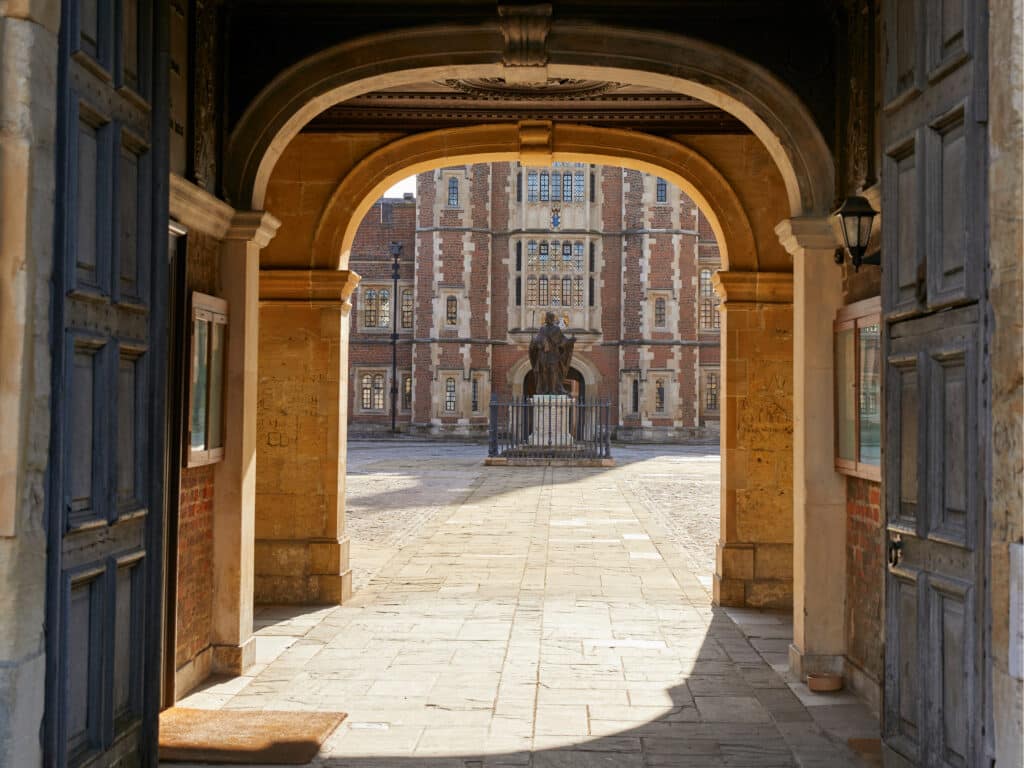While some bemoan that the IGCSE History course focuses almost solely on the 20th century, one definite benefit is that there is much of relevance to visit within a ninety-minute flight of London. It was in this spirit that a group of Year 10 historians spent the first few days of the Easter holidays in Germany, visiting the cities of Munich, Nuremberg, and Berlin.
After a fairly late arrival at our hotel, the first day was spent exploring Munich – the city to which National Socialism can trace its roots. We began the morning by discussing the Beer Hall Putsch (enacted by the Nazis in November 1923) with our guides, Andy and Andrew, at the sites the Putschists marched past.
While the weather was not entirely favourable, we managed to walk the whole route noting key locations. After a very busy and informative morning, the group stopped for a well-deserved lunch in the centre of Munich. We then visited the Ludwig-Maximillian University where the famous White Rose Movement carried out heroic acts of resistance against the Nazis. There, a small museum is laid out that allows visitors to engage with the stories of prominent individuals in the movement (almost all students of the university at the time), from their early lives, trials and then their sentencing at the hands of the infamous Peoples’ Court.
Our time in the beautiful city of Munich was all too brief and the next morning we were on our way to Nuremberg. In the 1930s, Nuremberg played host to a series of Nazi Party rallies. Nowadays, large parts of the rally ground’s stands remain although much of it has been repurposed. At the time of their construction, the stands could seat around 16,000 people, similar to a small football stadium. At the rally grounds, we focused on the evolution of the Nazi party from the fringe to the mainstream. Before continuing on to Berlin, we visited the Palace of Justice in Nuremberg. This building was the venue for the famous Nuremberg Trials, where twenty-four senior Nazis were tried for the atrocities committed during the Second World War and the Holocaust. The precedent set in this building, that crimes in war would not go unpunished, has persisted to this day and is still enforced by the International Criminal Court in The Hague. The remainder of the day was spent en route to Berlin.
The penultimate day was spent in Berlin. We began at the Reichstag, site of the fire that allowed Hitler to start his persecution of various groups, before visiting memorials to Roma and Sinti peoples as well as homosexuals persecuted by the Nazis set within the Tiergarten park. Afterwards, we crossed the former boundary of the Wall, and visited the site of Hitler’s bunker, now a non-descript car park. Set a mere fifty yards from the bunker is the memorial to all of the Jewish people murdered in the Holocaust. A striking memorial taking up a whole city-block, it serves as a poignant reminder to Berliners and tourists.
After a trip on Berlin’s extensive public transport system, we arrived at Hohenschönhause: a former prison where East Germans were kept in extreme conditions for crimes that they did not commit. We were shown around by guides with a personal attachment to the prison. For instance, the parents of our guide had each spent some years there before their freedom was bought by West Germany. Despite it being a very grim place, retaining much of its character, it provided a useful way of learning about the Statsi and how they controlled the population of the German Democratic Republic, as well as being a reminder of what totalitarianism carries with it. We spent the remainder of the day discussing the Berlin Wall and visiting the East Side Gallery.
On our final morning, we checked out of the hotel, and visited the Sachsenhausen concentration camp, a mere forty-minute drive from Berlin. After spending much of the last three days discussing the atrocities committed by the Nazis, coming to the site of a small proportion of them was a very highly visceral experience and one that is sure to stay with all of us for a very long time. The same van be said of the whole trip.
Thank you very much to Mr Fulton for leading the trip, Mr Greenwood, Mr Harrison, Dr Liviero and Mr Robinson for accompanying the group, and our two guides. Their understanding of all places we visited, coupled with an ability to make it engaging for a school group, was second to none.
